第69章 IV(2)
CHEMISTRY. includes the art of separating and combining the elements of matter, and the study of the changes produced by these operations.
We can hardly say too much of what it has contributed to our knowledge of the universe and our power of dealing with its materials. It has given us a catalogue raisonne of the substances found upon our planet, and shown how everything living and dead is put together from them. It is accomplishing wonders before us every day, such as Arabian story-tellers used to string together in their fables. It spreads the, sensitive film on the artificial retina which looks upon us through the optician's lens for a few seconds, and fixes an image that will outlive its original. It questions the light of the sun, and detects the vaporized metals floating around the great luminary,--iron, sodium, lithium, and the rest,--as if the chemist of our remote planet could fill his bell-glasses from its fiery atmosphere. It lends the power which flashes our messages in thrills that leave the lazy chariot of day behind them. It seals up a few dark grains in iron vases, and lo! at the touch of a single spark, rises in smoke and flame a mighty Afrit with a voice like thunder and an arm that shatters like an earthquake. The dreams of Oriental fancy have become the sober facts of our every-day life, and the chemist is the magician to whom we owe them.
To return to the colder scientific aspect of chemistry. It has shown us how bodies stand affected to each other through an almost boundless range of combinations. It has given us a most ingenious theory to account for certain fixed relations in these combinations.
It has successfully eliminated a great number of proximate compounds, more or less stable, from organic structures. It has invented others which form the basis of long series of well-known composite substances. In fact, we are perhaps becoming overburdened with our list of proximate principles, demonstrated and hypothetical.
How much nearer have we come to the secret of force than Lully and Geber and the whole crew of juggling alchemists? We have learned a great deal about the how, what have we learned about the why?
Why does iron rust, while gold remains untarnished, and gold amalgamate, while iron refuses the alliance of mercury?
The alchemists called gold Sol, the sun, and iron Mars, and pleased themselves with fancied relations between these substances and the heavenly bodies, by which they pretended to explain the facts they observed. Some of their superstitions have lingered in practical medicine to the present day, but chemistry has grown wise enough to confess the fact of absolute ignorance.
What is it that makes common salt crystallize in the form of cubes, and saltpetre in the shape of six-sided prisms? We see no reason why it should not have been just the other way, salt in prisms and saltpetre in cubes, or why either should take an exact geometrical outline, any more than coagulating albumen.
But although we had given up attempting to explain the essential nature of affinities and of crystalline types, we might have supposed that we had at least fixed the identity of the substances with which we deal, and determined the laws of their combination. All at once we find that a simple substance changes face, puts off its characteristic qualities and resumes them at will;--not merely when we liquefy or vaporize a solid, or reverse the process; but that a solid is literally transformed into another solid under our own eyes.
We thought we knew phosphorus. We warm a portion of it sealed in an empty tube, for about a week. It has become a brown infusible substance, which does not shine in the dark nor oxidate in the air.
We heat it to 500 F., and it becomes common phosphorus again. We transmute sulphur in the same singular way. Nature, you know, gives us carbon in the shape of coal and in that of the diamond. It is easy to call these changes by the name allotropism, but not the less do they confound our hasty generalizations.
These facts of allotropism have some corollaries connected with them rather startling to us of the nineteenth century. There may be other transmutations possible besides those of phosphorus and sulphur.
When Dr. Prout, in 1840, talked about azote and carbon being "formed" in the living system, it was looked upon as one of those freaks of fancy to which philosophers, like other men, are subject. But when Professor Faraday, in 1851, says, at a meeting of the British Association, that "his hopes are in the direction of proving that bodies called simple were really compounds, and may be formed artificially as soon as we are masters of the laws influencing their combinations,"--when he comes forward and says that he has tried experiments at transmutation, and means, if his life is spared, to try them again,--how can we be surprised at the popular story of 1861, that Louis Napoleon has established a gold-factory and is glutting the mints of Europe with bullion of his own making?